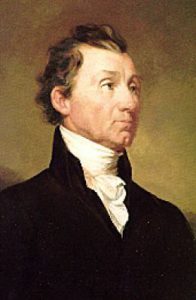The Fourth Census: Census Day was August 7, 1820.

on Census Day, August 7, 1820.
Authorizing Legislation
The fourth census was taken in accordance with the census act of March 14, 1820, which required more detailed population-related inquiries than earlier enumerations. This census is notable for being the first to inquire if respondents were engaged in agriculture, commerce, or manufacturing.
Enumeration
The enumeration began on the first Monday of August. Its scheduled six-month completion time frame was extended by about seven months to September 1, 1821. As in previous decades, the 1820 census act again required assistant marshals to visit every dwelling house, or head of every family within their designated districts.
Data relating to manufacturing were collected by assistants in each district, sent to the marshals, and then transmitted to the secretary of state along with the population returns. The report on manufacturing presented the data for these establishments by counties, but the results were not summarized for each district and the aggregate statement that was released was based on incomplete returns. The 1820 manufacturing census suffers the same criticism as that in 1810: Poor enumerator training resulted in dramatic variations in data quality and accuracy.
Further Information
- A wide variety of historical statistics from this and other decades is available in Historical Statistics of the United States: Colonial Times to 1970. It is available as a PDF [74.4MB] or 2-part ZIP file: Part I [52.2MB] | Part II [66.1MB].
- Reports and statistics from the 1820 census
- History and Growth of the United States Census: 1790-1890 [PDF 117MB], by Carroll D. Wright and William C. Hunt.

